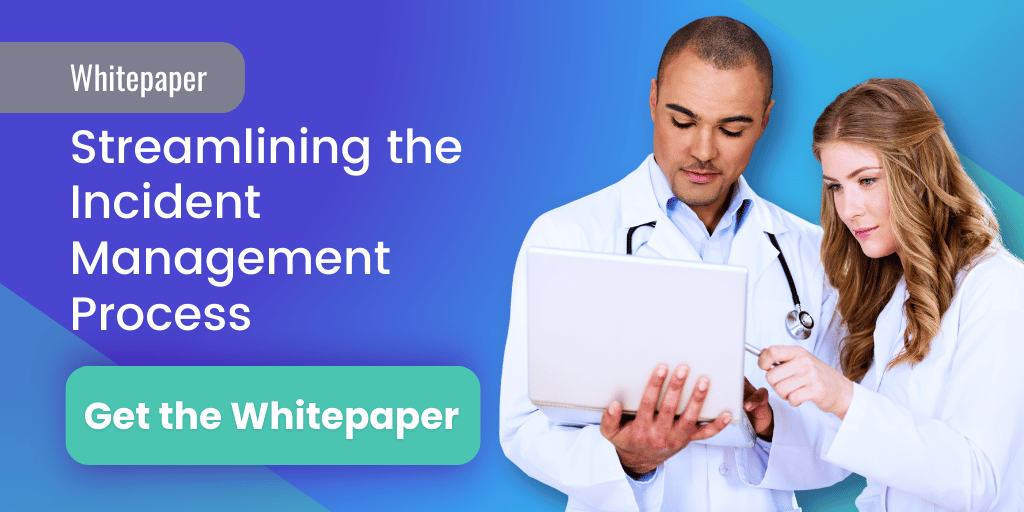3 min read
An Overview of Incident Reporting Software in Healthcare
Performance Health Partners
September 14, 2022

Incident reporting systems have long been used in high-risk industries like aviation and nuclear to promote safety and mitigate risk – and with great success. Incident reporting software in healthcare, on the other hand, is newer but is equally beneficial, offering enhanced safety, improved outcomes, and increased patient satisfaction. Read on for an overview of incident reporting technology in healthcare and how it’s transforming the industry.
The Role of Incident Reporting Software in Healthcare
“You can’t fix what you don’t know isn’t broken.” The old adage rings true in most situations, but is especially accurate when it comes to matters of healthcare.
Every day, thousands of patient safety events from medication errors and device malfunctions to falls and hospital-acquired infections threaten the well-being of patients and cost organizations millions of dollars.
One of the key reasons these events continue to happen is because organizations are often unaware of where or why they’re occurring, and thus cannot address them effectively. Furthermore, safety events have traditionally been chalked up to human error, with blame placed on an individual rather than organizational flaws and failures, which are generally the real cause.
Enter incident and event reporting. This process involves the submission of reports around occurrences that did (or could have) compromised patient care and/or employee safety. When an effective event reporting system is in place, organizations can utilize event data to identify the root causes of safety events, incidents, and near misses and even prevent them from happening again in the future.
Benefits of Incident Reporting Technology
Healthcare organizations have conventionally relied on paper and spreadsheets to manage the incident and event reporting process, but these forms of data collection are limited in efficacy. These time- and labor-intensive methods:
- Delay follow-up management
- Lack timelines and audit trails, creating vulnerabilities
- Result in information gaps
- Create communication silos and thus hinder remediation efforts
- Lack dashboards and analytics, resulting in no clear line of sight for leadership
Incident reporting software, on the other hand, automates burdensome risk management processes, prevents incidents, and improves care, among other benefits. These systems:
- Allow care teams to quickly and conveniently submit reports using customizable forms
- Are cloud-based, meaning different people in different departments or locations can submit, track, and update reports simultaneously
- Automatically categorize and escalate events and incidents to management for quick follow-up
- Enable root cause analysis to identify areas of risk and potential corrective interventions to prevent related events from reoccurring
- Boast real-time dashboards to identify trends and empower leadership to make data-driven decisions
In this way, incident reporting software in healthcare enables organizations to take a proactive approach to risk management and patient and employee safety. It also helps companies foster a culture of safety by engaging all workers at all levels in solving organizational problems and improving quality of care.
How Incident Reporting Software Works
So, how does a healthcare incident reporting system work, exactly?
Different incident systems each have their own unique functionalities, but the most effective incident reporting software, like Performance Health Partners’, works as follows:
- Step 1: Following a safety event (medication error, fall, infection, etc.), staff submits a report using an intuitive electronic form.
- Step 2: The report is instantly escalated to relevant management.
- Step 3: Management reviews the report, documents follow-up actions, and loops in additional team members as necessary through the cloud-based platform.
- Step 4: Tools like root cause analysis allow leadership to gain valuable insight into the event.
- Step 5: Leadership is able to identify patterns and gaps in processes and are thus able to make data-informed decisions and take corrective action to prevent related events from occurring in the future.
What Makes Effective Incident Reporting Software in Healthcare?
When evaluating an incident reporting system, it’s important to look for a solution that is flexible and highly configurable to meet the specific needs of your organization. Key features to consider include:
- User-centric, intuitive interface
- Customizable forms
- Centralized portal for communication
- Automatic routing and workflows
- Real-time dashboards
- Interoperability
Learn more about how which features to look for in a healthcare incident reporting software in our free whitepaper.
Is It Time to Update Your Incident Reporting System?
Outdated, inefficient incident reporting systems can cost a healthcare organization a hefty amount of time and money. Does your organization’s reporting software do everything you need it to? Does it meet the AHRQ’s standards? If it falls short, it’s time to update your system – for the benefit of your organization and for the safety of your patients and employees.
Incident reporting software in healthcare – like Performance Health Partners’ – can help to streamline the incident management process, making it more convenient for everyone on the care team to play a role in improving healthcare safety.
Want to learn more? Click here to request a free demo.


